This article was co-authored by Klare Heston, LCSW. Klare Heston is a Licensed Independent Clinical Social Worker based in Cleveland, Ohio. With experience in academic counseling and clinical supervision, Klare received her Master of Social Work from the Virginia Commonwealth University in 1983. She also holds a 2-Year Post-Graduate Certificate from the Gestalt Institute of Cleveland, as well as certification in Family Therapy, Supervision, Mediation, and Trauma Recovery and Treatment (EMDR).
There are 16 references cited in this article, which can be found at the bottom of the page.
wikiHow marks an article as reader-approved once it receives enough positive feedback. This article has 36 testimonials from our readers, earning it our reader-approved status.
This article has been viewed 2,362,228 times.
Dreams can have a powerful effect on our waking lives. They reflect our hopes and fears about the future and even help us revisit our pasts. Whether you want to learn how to lucid dream (i.e. actively control and be aware of your dreams while sleeping) or you simply want to learn how to have more pleasant dreams, there are a number of things you can do throughout the day and before you go to bed to have the dreams you want.
Steps
Controlling Your Dreams
-
1Control your dreams in small ways once you realize you are dreaming. Once you've done a reality check and realize that you really are dreaming, try to stay calm and not get too excited about the fact that you're dreaming. If you do this, then it's likely that you'll wake up. Instead, stay calm and immersed in the world of your dreams, and start to control small things before you build up toward something more elaborate.
- You can start carefully trying to change the scenery or just to move through the space of your dream. You can start to touch things, and attempt to make small objects appear or disappear.
-
2Take more control over your dreams. Once you're comfortably lucid dreaming and feel like you have a fair amount of control over your dreams, you can start to aim a bit higher when you try to control your dreams. You can make yourself fly, summon people, change the scenery completely, trying to return to a place from your childhood or even to travel through time. As you get more and more used to lucid dreaming, you'll be able to have the dreams you want more regularly.
- When you wake up, remember to record the dream. Mark the point at which you realized you were lucid dreaming, and write down all of the things you were and were not able to do. If there's something you are never able to do when you're lucid dreaming, such as flying, then ask yourself what's holding you back.
Advertisement -
3Periodically remind yourself that you are dreaming. Once you're dreaming and have recognized that you're in a dream, you should tell yourself that you're dreaming every so often. If you don't do this, then you may forget that you are actually dreaming, and you won't feel as in control of everything that is happening. If you keep reminding yourself that you are dreaming, then you will feel more capable of changing and controlling your dream situation.
-
4Make yourself fly. One thing you can try to do when you're lucid dreaming is to fly. You may not be able to fly at first, but you can build yourself up to get there. You can tell yourself, "Okay, now I'm going to fly," to make yourself get into the mindset of being ready to fly. You can start hopping around, jumping up and down, and moving your body in an upwards motion before you fully fly. Once you're more comfortable doing this, you'll be able to start hovering above the ground until you're flying.
- As you're flying, don't be down on yourself or doubt what is possible. If you're filled with doubt, then you won't be able to truly fly. If you find yourself lowering, try taking a big hop or a jump and then take off again.
-
5Summon a dream object. You may also want to summon an object or something you really want to play with or hold in your hand. If you want to do this, then you have to be creative about how it can be possible. Maybe you want a delicious cake. Well, then first you should imagine that you're in a kitchen or a restaurant so that the cake can be brought out. If you're just thinking of the cake too hard, then it may not come to you, but if you create an environment that will make the cake more likely, then it will be in your hands.
-
6Change the scenery. You can also change the scenery in your dream if you try hard enough. Once you know you're dreaming, you can try to imagine opening a door that will lead you to your dream place, or you can slowly add parts of the scene to your scenario until you have the scenery you want. If you're trying to remember a childhood home, start by summoning your favorite tree in the backyard, then the back porch, then your back door, and so on, until you have created the world you want.[1]
- It can help to have an image or a photo of the scenery you're looking for at your bedside before you go to bed. Make sure it's one of the last things you look at, so your mind is more ready for the adventure.
-
7Travel through time. Some people are able to travel through time in their dreams. You can imagine yourself getting into your own personal time machine or opening a door to a new world. If one thing isn't working, try another. You can even tell yourself, "Now I'm going to travel through time" and focus on making it happen without forcing it too much. It helps if you go to bed while thinking of the time in your life that you'd like to return to.[2]
Having More Pleasant Dreams
-
1Have a more relaxing bedtime routine. It's important to ease into sleep and to have a relaxation routine, such as drinking herbal tea or reading a book, before you fall asleep so that your dreams are less likely to be scary or disturbing. Find whatever works best for helping you fall asleep and stick to the pattern you have developed. Try to push any stressful or painful thoughts from your mind as you ease into sleep.
- Avoid watching violent, scary, or otherwise stressful movies and television shows before going to bed, as these can cause nightmares.[3]
- If you want a more restful sleep, turn off all visual stimuli at least half an hour to an hour before bed. That means no phones, no TV, no computer, and nothing else that will make it harder for you to turn your mind off and to have a more restful sleep.
-
2Go to bed earlier. A sleep study conducted in 2011 for the journal Sleep and Biological Rhythms concluded that university students who stayed up later tended to have more unpleasant dreams than those who hit the sack earlier. If you want your dreams to be more pleasant, then try going to bed at least an hour earlier every night and see if that has a positive impact on your dreams.[4]
- One potential explanation for this finding is that the stress hormone cortisol is released in the early morning, a time in which the night-owls were likely in REM (Rapid Eye Movement), or dream, sleep.[5]
-
3Control your diet. Nightmares can be triggered by a variety of things, including late-night snacking, alcohol, caffeine, or cigarettes.[6] If you have persistent nightmares, then consider cutting out these substances, and don't eat for two to three hours before you go to sleep. This will give you enough time to digest your food and will lead to a more restful sleep.
- If you're serious about having deeper and more pleasant dreams, then you should avoid the caffeine after about noon. You may feel that you need the extra energy, but it'll make it harder for you to fall asleep.
- Though you may think that a glass of wine before bed will help you fall asleep, it will actually lead you to have a less restful sleep. And if your sleep is less restful and you want to actually control your dreams, then this will make it harder to do.
- Avoid sugar close to bedtime as well. Sugar can overstimulate you and keep you awake.
-
4Tackle stress. Oftentimes, negative dreams are a reflection of the stress or anxiety we are experiencing in our everyday lives.[7] Try not to dwell on these things while you are laying in bed trying to fall asleep. Instead, take a moment to clear your head and think of positive things. The more you focus on having a less stressful outer life, the calmer your inner life and your dreams will be.
- Getting regular exercise can help you ease stress levels, have better dreams, and get to sleep faster.[8] Don't exercise too close to bedtime, however, as this can keep you up.
-
5Put roses in your bedroom. Scientists conducted a dream study in which women were exposed to the scent of roses throughout the night for at least 30 nights, and reported having more pleasant dreams than usual.[9] It is believed that the scent elicits positive emotions, which in turn make dreams more pleasant.
- You can also use rose-scented oils, body lotions, or candles. Be sure to blow out the candles before going to sleep, however, to prevent fires.
EXPERT TIPKlare Heston is a Licensed Independent Clinical Social Worker based in Cleveland, Ohio. With experience in academic counseling and clinical supervision, Klare received her Master of Social Work from the Virginia Commonwealth University in 1983. She also holds a 2-Year Post-Graduate Certificate from the Gestalt Institute of Cleveland, as well as certification in Family Therapy, Supervision, Mediation, and Trauma Recovery and Treatment (EMDR).Licensed Social Worker
 Klare Heston, LCSW
Klare Heston, LCSW
Licensed Social WorkerScented oils may soothe you at night and influence your dreams. According to Klare Heston, a Licensed Clinical Social Worker, “Different oils work better for different people. Lavender is certainly one you can try. Get some vials of several oils and see which one works best for you. You can also do some research online or ask for assistance in your health food or toiletry store.”
Preparing for Lucid Dreaming During the Day
-
1Get enough sleep. Dreams occur during REM (Rapid Eye Movement) sleep, a phase of the sleep cycle.[10] If you are not sleeping enough, or frequently wake up throughout the night, your REM cycles may be getting interrupted. You need to make sure to get between 7-9 hours of sleep on a regular basis and to go to bed around the same time every night so your mind and body know what to expect.
-
2Pay attention to your dreams. Many people believe that learning how to notice and remember your dreams is the first step to achieving lucid dreams.[11] Before you go to bed, remind yourself that you plan on waking up and fully recalling your dreams. This will eventually train your subconscious to pay better attention to your dreams. Here are some ways to better remember your dreams:
- Upon waking up, ask yourself what you dreamt. Don't get out of bed immediately, or it'll be harder to remember what happened. Instead, stay in bed and focus on the details of the dreams.[12] Part of the reason people "forget" their dreams is because they wake up and immediately begin thinking about other things. Get in the habit of asking yourself this question every single morning.
- Write down your dreams. Do this immediately after you wake up, and keep a journal and pen at your bedside so that you can quickly write down your dreams before you forget them. This will also help you notice your dream patterns over time.[13] Make sure to keep the lights dim and to stay in bed while you write the dreams down. Staying in the twilight state will help you to remember more of the dreams you have.
-
3Perform reality checks while you're dreaming and throughout the day. Reality checks are tests that you can perform, both while dreaming and while awake, that help you differentiate between the real world and the dream world. Successfully performing a reality check while asleep can help you trigger a lucid dream, as your dream-self becomes aware of its state. Try the following reality check tests:[14] [15]
- Try to fly. Obviously, this will only work in a dream. [16]
- Look at your reflection in the mirror. If your reflection is distorted, blurry, or not there, then you are probably dreaming.[17]
- Try to read a clock. The image will be too blurry to read in a dream. [18]
- Flick the light switches on and off. Light switches do not work in the dream world. Also, see if you can turn the lights on and off with your mind. If you can, then you know you're dreaming.
- Look at your hands. Check to see if they look normal from close-up. If you're dreaming, then you might have less or more fingers than normal.
- Try using an electronic device. Computers and telephones do not work properly in dreams..
- See if you can "breathe" while closing your mouth and nose. If you can, then you're dreaming.
- Try to put an item, such as a pencil, through your hand, (the palm). If you are dreaming, the pencil will either go through inexplicably or hang in the air around your hand. If you aren't you'll get a graphite mark on your hand.
- Try to read something. In most dreams, the words will be inconsistent and random.
-
4Look for dream signs. As you get in the habit of recording your dreams, start looking for signs that you're really dreaming. It could be a recurring image, like an island you have never seen before in real life, or a recurring event, such as losing your teeth or getting so dizzy you can't move. Look for patterns that let you know that you're really dreaming and then write these down. Knowing these signs can help you be more aware of the fact that you're dreaming because you'll be able to recognize them more easily.
- Once you recognize one of the dream signs in your dream, you can tell yourself that you are, in fact, dreaming.
-
5Play video games. One psychologist believes that video games familiarize people with operating in an alternating reality and viewing oneself from outside one's own body, skills that translate into the dream world.[19] Her research concluded that people who played video games were more likely to experience lucid dreams, and were better at controlling them.[20]
- Don't play violent video games before going to bed, as these can provoke nightmares. Make sure you stop playing them at least an hour before bed if you want to try this technique.
-
6Eat foods that are rich in melatonin. Melatonin is a hormone that is commonly found in plants, animals, and microbes. Melatonin is a powerful antioxidant and has also been shown to boost REM sleep and to make dreams more vivid. Others also say that melatonin can help people fall asleep faster. If you want to be able to dream more vividly, fall asleep more deeply, and therefore, to have more control of your dreams, then you should eat some of the following melatonin-rich foods:[21]
- Cherries
- Oats
- Almonds
- Sunflower seeds
- Flax seeds
- Radishes
- Rice
- Tomatoes
- Bananas
- White mustard
- Black mustard
-
7Ask yourself if you're dreaming throughout the day. As you go about your day, whether you're sitting in class or checking the mail, make a habit of asking yourself, "Am I dreaming?" If you do this regularly, then it'll make it more likely for you to ask yourself if you're dreaming when you're actually having a dream. And if you do this, then you'll be able to realize that you are dreaming and to take control of your dreams, choosing whatever you want to happen.
- Asking yourself whether you're dreaming or not can heighten your alertness, which will also make you more likely to lucid dream.
Preparing for Lucid Dreaming Before Bed
-
1Meditate before going to bed. Being able to lucid dream requires that you be fully self-aware and undistracted by thoughts that relate to your waking life. While you are laying in bed trying to fall asleep, clear your head of distracting thoughts, and focus all of your attention on the fact that you are falling asleep and about to enter a dream state.
- Meditation will also help you clear your mind of all of the negativity that will keep you from having a restful sleep.
-
2Visualize your lucid dream. Before you go to bed, decide what you want to dream about.[22] Paint a vivid image of your surroundings, and be sure to include details like sights, sounds, and smells. Put yourself in the scene, and try moving around within it.
- Pay attention to the sensations of breathing and walking around in this dreamscape. Though you are not yet dreaming, tell yourself "I'm in a dream." Continue this visualization technique until you have fallen asleep.
- Choose your ideal location for optimal results.
-
3Leave dream signs at your bedside. Leave a photo, a symbol, or even a blank piece of paper at your bedside before you fall into sleep. Take something that represents the thing you want to dream about and leave it out before you go to bed so that it can help you transition into the dream you want to have. If you want to dream about a certain person, have that person's picture out near you. If you're an artist who is struggling to find a subject, leave a blank canvas at your bedside.
- Taking this measure can prime you to dream about the things you want to dream about because it will plant the kernel of these things in your mind before you go to sleep.
-
4Prepare yourself to control your dreams before you go to bed. As you lie in bed and get ready for sleep, tell yourself something as simple as, "Tonight, when I dream, I want to realize I'm dreaming." Repeat this to yourself a few times and really focus on making it happen. This will help you get in the mindset you need to be in to recognize that you're dreaming.
-
5Sleep in complete darkness. If you really want to control your dreams, then you should sleep in complete darkness, or as close to complete darkness as you can. Sleeping in darkness keeps your melatonin levels high and promotes better dreaming and better dream recall. Ideally, there should be no difference between the darkness you see when you open your eyes in bed and when you close them. Avoid any dim lights, windows that cast a lot of light, or other elements that will keep you from being in the darkest environment possible.[23]
-
6Try the MILD technique. Stephen LaBerge of Stanford University, who founded the Lucidity Institute, created a technique known as MILD (Mnemonic Induction of Lucid Dreams) which has been called one of the most effective techniques for inducing lucid dreaming. Here is what you have to do:[24]
- When you go to bed at night, tell yourself that you will remember your dreams.
- Focus on realizing when you're dreaming, and also on remembering that it is a dream.
- Imagine what you want to do during that dream, whether it's flying or dancing.
- Repeat the last two steps of realizing when you're dreaming and reentering a dream until you actually fall asleep.
- Continue using this technique until you are able to make yourself have lucid dreams.
-
7Make your nightmares go away. Though it can be difficult to control your dreams and make your nightmares go away, one thing you can try is to visualize an alternate ending to the nightmare. If you always dream about a scary man in your home, imagine yourself warding him off, or imagine him just leaving on his own. Whatever the scary dream may be, find a way to imagine it so that you come out as a victor and that the nightmare goes away.[25]
- If you think about this intensely enough, write it down, and even say it aloud, then you may be able to reprogram the way your mind approaches the dream.
Expert Q&A
-
QuestionCan you go into other people's dreams?
 Klare Heston, LCSWKlare Heston is a Licensed Independent Clinical Social Worker based in Cleveland, Ohio. With experience in academic counseling and clinical supervision, Klare received her Master of Social Work from the Virginia Commonwealth University in 1983. She also holds a 2-Year Post-Graduate Certificate from the Gestalt Institute of Cleveland, as well as certification in Family Therapy, Supervision, Mediation, and Trauma Recovery and Treatment (EMDR).
Klare Heston, LCSWKlare Heston is a Licensed Independent Clinical Social Worker based in Cleveland, Ohio. With experience in academic counseling and clinical supervision, Klare received her Master of Social Work from the Virginia Commonwealth University in 1983. She also holds a 2-Year Post-Graduate Certificate from the Gestalt Institute of Cleveland, as well as certification in Family Therapy, Supervision, Mediation, and Trauma Recovery and Treatment (EMDR).
Licensed Social Worker Sometimes when you are very close to someone you can have related or similar dreams. This might be more likely to happen if you talk about your dreams or share your dream journals.
Sometimes when you are very close to someone you can have related or similar dreams. This might be more likely to happen if you talk about your dreams or share your dream journals. -
QuestionHow do you trigger a lucid dream?
 Klare Heston, LCSWKlare Heston is a Licensed Independent Clinical Social Worker based in Cleveland, Ohio. With experience in academic counseling and clinical supervision, Klare received her Master of Social Work from the Virginia Commonwealth University in 1983. She also holds a 2-Year Post-Graduate Certificate from the Gestalt Institute of Cleveland, as well as certification in Family Therapy, Supervision, Mediation, and Trauma Recovery and Treatment (EMDR).
Klare Heston, LCSWKlare Heston is a Licensed Independent Clinical Social Worker based in Cleveland, Ohio. With experience in academic counseling and clinical supervision, Klare received her Master of Social Work from the Virginia Commonwealth University in 1983. She also holds a 2-Year Post-Graduate Certificate from the Gestalt Institute of Cleveland, as well as certification in Family Therapy, Supervision, Mediation, and Trauma Recovery and Treatment (EMDR).
Licensed Social Worker You can trigger a lucid dream by having a relaxing bedtime ritual—including meditation. You can also visualize what you want to dream about—for example, calmness, a nature scene, or a particular accomplishment.
You can trigger a lucid dream by having a relaxing bedtime ritual—including meditation. You can also visualize what you want to dream about—for example, calmness, a nature scene, or a particular accomplishment. -
QuestionCan you control what you dream about?
 Klare Heston, LCSWKlare Heston is a Licensed Independent Clinical Social Worker based in Cleveland, Ohio. With experience in academic counseling and clinical supervision, Klare received her Master of Social Work from the Virginia Commonwealth University in 1983. She also holds a 2-Year Post-Graduate Certificate from the Gestalt Institute of Cleveland, as well as certification in Family Therapy, Supervision, Mediation, and Trauma Recovery and Treatment (EMDR).
Klare Heston, LCSWKlare Heston is a Licensed Independent Clinical Social Worker based in Cleveland, Ohio. With experience in academic counseling and clinical supervision, Klare received her Master of Social Work from the Virginia Commonwealth University in 1983. She also holds a 2-Year Post-Graduate Certificate from the Gestalt Institute of Cleveland, as well as certification in Family Therapy, Supervision, Mediation, and Trauma Recovery and Treatment (EMDR).
Licensed Social Worker Control might be too strong a word, perhaps influence or shape might be more accurate. You can develop a relaxing bedtime routine, get the right number of hours of sleep that you personally need (7-9 hours), and avoid stress, sugar, drugs, and alcohol prior to going to bed.
Control might be too strong a word, perhaps influence or shape might be more accurate. You can develop a relaxing bedtime routine, get the right number of hours of sleep that you personally need (7-9 hours), and avoid stress, sugar, drugs, and alcohol prior to going to bed.
References
- ↑ http://www.world-of-lucid-dreaming.com/how-to-control-your-dreams.html
- ↑ http://www.world-of-lucid-dreaming.com/how-to-control-your-dreams.html
- ↑ http://kidshealth.org/teen/expert/sleep/expert_nightmares.html
- ↑ http://www.livescience.com/17290-facts-dreams-nightmares.html
- ↑ http://www.livescience.com/17290-facts-dreams-nightmares.html
- ↑ http://kidshealth.org/teen/expert/sleep/expert_nightmares.html
- ↑ http://kidshealth.org/teen/expert/sleep/expert_nightmares.html
- ↑ http://kidshealth.org/teen/expert/sleep/expert_nightmares.html
- ↑ http://www.dailymail.co.uk/sciencetech/article-1059329/How-sweet-dreams--simply-smell-roses.html#axzz2K40jnwVB
- ↑ http://www.lucidity.com/NL11.DreamRecall.html
- ↑ http://kidshealth.org/teen/expert/sleep/expert_nightmares.html
- ↑ http://www.lucidity.com/NL11.DreamRecall.html
- ↑ http://www.scientificamerican.com/article/how-to-control-dreams/
- ↑ http://dailyinfographic.com/how-to-control-your-dreams-infographic
- ↑ http://www.scientificamerican.com/article/how-to-control-dreams/
- ↑ http://www.world-of-lucid-dreaming.com/reality-checks.html
- ↑ http://www.world-of-lucid-dreaming.com/reality-checks.html
- ↑ http://www.world-of-lucid-dreaming.com/reality-checks.html
- ↑ http://www.livescience.com/17290-facts-dreams-nightmares.html
- ↑ http://www.livescience.com/17290-facts-dreams-nightmares.html
- ↑ http://dailyinfographic.com/how-to-control-your-dreams-infographic
- ↑ http://www.world-of-lucid-dreaming.com/reality-checks.html
- ↑ http://www.social-consciousness.com/2012/09/lucid-dreaming-7-tricks-you-didnt-know.html
- ↑ http://science.howstuffworks.com/life/inside-the-mind/human-brain/dream5.htm
- ↑ http://www.scientificamerican.com/article/how-to-control-dreams/
- http://www.scientificamerican.com/article/how-to-control-dreams/
- http://science.howstuffworks.com/life/inside-the-mind/human-brain/dream5.htm
- http://www.livescience.com/17290-facts-dreams-nightmares.html
- http://www.world-of-lucid-dreaming.com/how-to-control-your-dreams.html
- http://dailyinfographic.com/how-to-control-your-dreams-infographic
- http://www.social-consciousness.com/2012/09/lucid-dreaming-7-tricks-you-didnt-know.html
About This Article
To have the dreams you want, try to control small things in your dream when you realize you're dreaming. For example, you could pick up a small object or walk through a room. Once you've mastered this technique, aim to make bigger changes by flying, or summoning other people or objects. Do this by imagining something associated with the object, like thinking about being in a restaurant if you want a cake to appear. You can also use this technique to travel in time by imagining stepping into your own time machine. For tips on how to look for dream signs, keep reading!








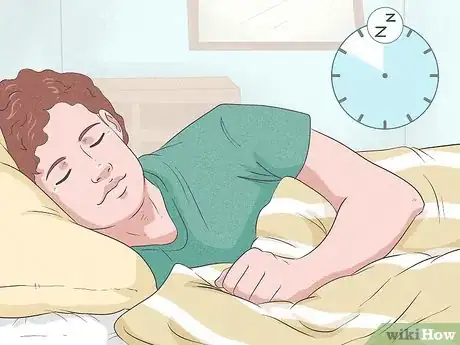

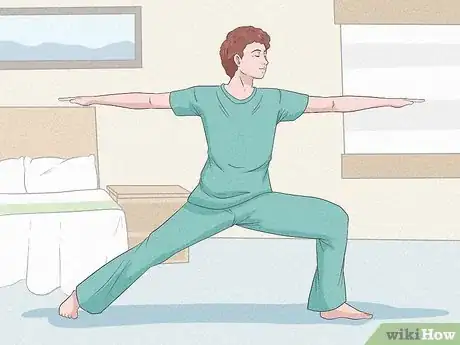



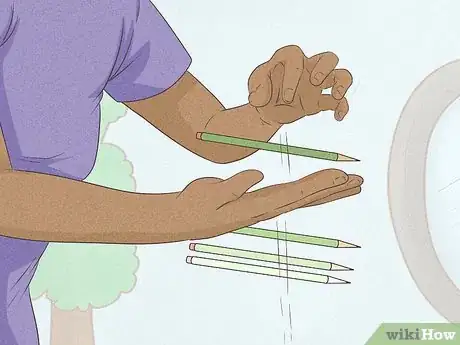






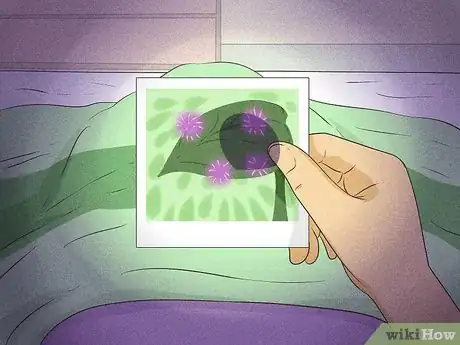












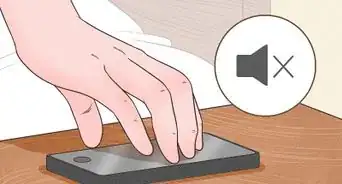






















































Medical Disclaimer
The content of this article is not intended to be a substitute for professional medical advice, examination, diagnosis, or treatment. You should always contact your doctor or other qualified healthcare professional before starting, changing, or stopping any kind of health treatment.
Read More...